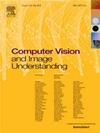Convolutional neural network framework for deepfake detection: A diffusion-based approach
IF 4.3
3区 计算机科学
Q2 COMPUTER SCIENCE, ARTIFICIAL INTELLIGENCE
引用次数: 0
Abstract
In the rapidly advancing domain of synthetic media, DeepFakes emerged as a potent tool for misinformation and manipulation. Nevertheless, the engineering challenge lies in detecting such content to ensure information integrity. Recent artificial intelligence contributions in deepfake detection have mainly concentrated around sophisticated convolutional neural network models, which derive insights from facial biometrics, including multi-attentional and multi-view mechanisms, pairwise/siamese, distillation learning technique and facial-geometry approaches. In this work, we consider a new diffusion-based neural network approach, rather than directly analyzing deepfake images for inconsistencies. Motivated by the considerable property of diffusion procedure of unveiling anomalies, we employ diffusion of the inherent structure of deepfake images, seeking for patterns throughout this process. Specifically, the proposed diffusion network, iteratively adds noise to the input image until it almost becomes pure noise. Subsequently, a convolutional neural network extracts features from the final diffused state, as well as from all transient states of the diffusion process. The comprehensive experimental analysis demonstrates the efficacy and adaptability of the proposed model, validating its robustness against a wide range of deepfake detection models, being a promising artificial intelligence tool for DeepFake detection.
深度伪造检测的卷积神经网络框架:一种基于扩散的方法
在快速发展的合成媒体领域,DeepFakes成为虚假信息和操纵的有力工具。然而,工程上的挑战在于检测这些内容以确保信息的完整性。最近人工智能在深度伪造检测方面的贡献主要集中在复杂的卷积神经网络模型上,该模型从面部生物识别技术中获得见解,包括多注意和多视角机制、两两/连体、蒸馏学习技术和面部几何方法。在这项工作中,我们考虑了一种新的基于扩散的神经网络方法,而不是直接分析深度伪造图像的不一致性。由于揭示异常的扩散过程具有相当大的性质,我们采用了对深度假图像固有结构的扩散,在整个过程中寻找模式。具体来说,所提出的扩散网络迭代地向输入图像中加入噪声,直到它几乎变成纯噪声。随后,卷积神经网络从最终扩散状态中提取特征,以及从扩散过程的所有瞬态中提取特征。综合实验分析证明了该模型的有效性和适应性,验证了其对各种深度伪造检测模型的鲁棒性,是一种很有前途的深度伪造检测人工智能工具。
本文章由计算机程序翻译,如有差异,请以英文原文为准。
求助全文
约1分钟内获得全文
求助全文
来源期刊

Computer Vision and Image Understanding
工程技术-工程:电子与电气
CiteScore
7.80
自引率
4.40%
发文量
112
审稿时长
79 days
期刊介绍:
The central focus of this journal is the computer analysis of pictorial information. Computer Vision and Image Understanding publishes papers covering all aspects of image analysis from the low-level, iconic processes of early vision to the high-level, symbolic processes of recognition and interpretation. A wide range of topics in the image understanding area is covered, including papers offering insights that differ from predominant views.
Research Areas Include:
• Theory
• Early vision
• Data structures and representations
• Shape
• Range
• Motion
• Matching and recognition
• Architecture and languages
• Vision systems
 求助内容:
求助内容: 应助结果提醒方式:
应助结果提醒方式:


